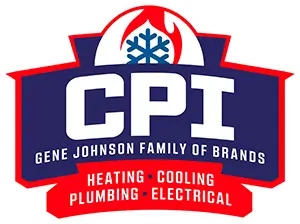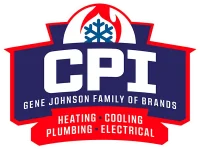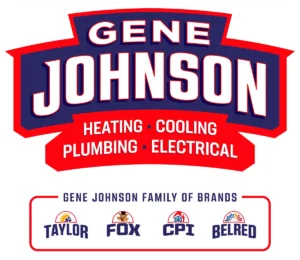Why Is My AC Fan Outside Not Spinning?
As any seasoned homeowner in Whatcom or Skagit County can attest, few things are more frustrating than stepping outside on a sweltering summer day only to discover your air conditioning unit’s outdoor fan has decided to take a siesta.
That unmoving fan means your AC system is essentially running on fumes, struggling to pull in the fresh air required for efficient cooling. Before panic sets in about costly repairs or replacements, take a deep breath – local HVAC experts are here to guide you through the potential culprits and troubleshooting steps for an idle outdoor fan.
From simple fixes like clearing debris to more complex issues like failed motors or electrical malfunctions, we’ll arm you with the knowledge to tackle this common cooling conundrum head-on. By the end, you’ll be empowered to either resolve the problem yourself or recognize when it’s time to call in the professionals. Let’s get that fan spinning again so you can beat the heat in northwestern Washington!

Understanding the Role of the Outdoor AC Fan
Before we dive into why that outdoor unit fan has stalled and how to revive it, it’s important to understand just how critical a role this humble component plays in your home’s air conditioning system. You see, the outdoor fan’s primary job is to draw hot air from inside your home across the condensing coils and expel it back outside. This heat transfer process allows the refrigerant coursing through the coils to siphon thermal energy out of your home’s air supply.
Without that outdoor fan consistently pulling and pushing air, your AC’s condenser can’t efficiently release its absorbed heat from indoors. It’s like an engine operating without a radiator fan – catastrophic overheating ensues before you know it. So when you notice that exterior fan sitting idle, it’s effectively putting the brakes on your entire cooling cycle’s performance. Rooms start warming up, humidity feels oppressive, and your system strains under increasing pressure just to maintain bearable temperatures.
That’s why addressing any outdoor fan issues needs to be a top priority for homeowners across Whatcom and Skagit counties once summer’s heat waves strike. An undernourished air conditioner is an incredibly inefficient one at best and a stoppage risk at worst. With the fan’s critical role in mind, let’s explore some of the common culprits behind why it may have stopped spinning.
Common Reasons Why the AC Fan Isn’t Spinning
Even the most reliable outdoor AC units can succumb to various malfunctions causing that all-important fan to grind to a halt. From electrical gremlins to mechanical breakdowns, there’s quite a few potential culprits homeowners across Whatcom and Skagit Counties should investigate. Let’s run through some of the most frequent offenders in detail.
Power Issues
Sometimes the problem stems from a disrupted electrical power supply – but don’t assume it’s as simple as a tripped circuit breaker just yet. While a loose wire connection or overly sensitive breaker could certainly be the root cause, you’ll want to take voltage readings at the disconnect box with a multimeter first.
Capacitor Problems
Both the outdoor fan motor and compressor rely on capacitors to deliver an initial torque boost from the power supply when starting up their cycles. If a capacitor has degraded significantly or failed outright, it may no longer provide enough electrical juice for components like the fan to reliably kick on. You’ll want to carefully discharge any residual capacitor energy for safety, then test the capacitor terminals using a multimeter to check if they’re outputting proper microfarad ratings. Some units utilize dual capacitors too, so both may require inspection.
Motor Issues
Of course, the fan motor itself could be the main point of failure too. Years of constant operation can cause motor bearings to seize up from lack of lubrication or accumulation of dust and debris. The motor’s winding insulation may have deteriorated as well from heat stress, increasing electrical resistance. If the motor casing feels irregularly hot to the touch or you hear telltale grinding noises when it should be spinning, those are textbook signs of impending motor failure that necessitates replacement.
Contactor Problems
The contactors (electrical relays) that control voltage flowing to key components like your outdoor fan motor can develop functionality issues over time as well. Surface pitting, debris accumulation, or even fused contacts from electrical arcing can prevent a complete electrical circuit from properly engaging the fan motor. Potential contactor problems should be inspected by a professional.
Belt or Mechanical Issues
For AC units utilizing a belt-driven fan system, a deteriorated or snapped belt obviously eliminates the transference of rotation power from the motor. But other mechanical components like support bearings, pulleys, and shaft couplings could be worn down too from constant annual thermal cycling. Visible cracks, excessive play, or seizing in these parts warrant replacement.
Thermostat Issues
While the thermostat itself is located indoors, don’t totally rule out problems stemming from improperly wired thermostat cables or a malfunctioning thermostat control board. If the outdoor unit isn’t receiving the correct cooling command signals to engage components like the fan motor, it may refuse to activate altogether as a built-in safety precaution. Thermostat issues can be difficult to self-diagnose.
Refrigerant Levels
While a loss of refrigerant won’t directly prevent the outdoor fan from spinning, those low refrigerant charge levels or a refrigerant leak could be triggering one of your AC’s safety pressure switches from activating the fan motor in the first place. These pressure switches are designed to cut condenser fan operation if refrigerant levels drop too low to avoid compressor damage. Topping off refrigerant levels may be needed to reset the safety mechanisms.
No matter which of these potential problems is stalling your outdoor fan’s spinning, remember that a fully functional condenser unit is absolutely critical to your air conditioner’s cooling performance and efficiency. Don’t let the issue linger – get to the root cause sooner rather than later!
Troubleshooting Steps
Once you’ve identified the potential culprit behind your outdoor AC fan’s stillness, it’s time to dive into basic troubleshooting. Depending on your level of HVAC system know-how, many of these steps can be tackled safely by handy homeowners themselves. But keep your limitations in mind – refrigerant handling and complex electrical work necessitate professional backup.
Power Problems
For suspected electrical power issues, start by checking your home’s circuit breaker panel thoroughly. Ensure the breaker controlling the AC unit’s dedicated circuit hasn’t tripped. You can then inspect the unit’s disconnect box using a non-contact voltage tester to verify power is flowing properly before proceeding.
Capacitor Concerns
When capacitor degradation seems likely, shutting off all power sources to the unit is critical before inspection. Once no voltage is present, you can carefully discharge any residual capacitor energy by shorting the terminals together with an insulated screwdriver. Test the capacitors with a multimeter, replacing any outputting ohm or microfarad readings wildly off from specifications.
Motor Woes
Attempting DIY fan motor replacement requires extensive system knowledge and electrical caution. It’s generally wisest to have a professional assess the specific motor failure signs before committing resources to this level of equipment replacement on your own. Their expertise ensures safe handling.
Contactor Snags
While you can attempt cleaning surface buildup or pitting from electrical contactors, any suspicion of deeper internal faults makes professional evaluation the prudent route. Their advanced tools can properly test amp flow through each contactor to confirm proper operation before proceeding.
Belt Fixes
Homeowners moderately comfortable with minor HVAC repairs can likely replace snapped or excessively worn fan belts themselves after defensive electrical precautions. Just ensure the replacement belt meets all manufacturer specifications to avoid alignment and tension problems.
Thermostat Resets
For thermostat control issues preventing the condenser fan from activating, first try resetting the thermostat completely by powering it down, removing batteries, and holding down reset buttons for a full five minutes. Check all wiring connections too.
Refrigerant Checks
While you shouldn’t attempt refrigerant recharging yourself due to the risk of releasing greenhouse gases improperly, you can use a basic U-Tube Manometer to check if pressures seem abnormally high or low as a first diagnostic step before calling in the pros.
When in doubt, don’t hesitate to loop in a trustworthy HVAC professional. Their experienced troubleshooting can quickly pinpoint issues while keeping you and your system safe from unintended damages. Proper care now prevents costly fallout later!
When to Call a Professional
While many components behind an idle outdoor AC fan allow for basic homeowner troubleshooting and maintenance, there are several scenarios where it’s wise to loop in professional HVAC expertise from the get-go. Their advanced training and experience can save you from potential safety hazards or accidental system damage.
Electrical Mysteries
Any time your initial voltage testing or circuit inspections hint at deeper electrical riddles beyond a simple tripped breaker or loose connection, it’s best to have a pro’s set of eyes. Outdated aluminum wiring, corroded terminations, or issues with your utility feed all require their specialized diagnosis tools and knowledge.
Capacitor Quandaries
While physically replacing start/run capacitors tends to be straightforward if you’re comfortable with electrical work, odd test readings or visibly damaged capacitor exteriors signal underlying problems. Technicians can properly assess contaminants or failure modes before safely proceeding.
Motor Mastery
As the literal heart pumping fresh air through your AC system, fan motor repairs necessitate an experienced professional’s mastery virtually every time. Their specific motor skills ensure safe electrical lockout, proper dismantling, precision shaft realignment, and seamless reassembly.
Contactor Complexities
While basic contact surface cleanings using approved solvents may solve some minor contactor hiccups, any suspected burnt, pitted, or fused contractor interiors require low voltage testing, megohmmeter diagnostics, and amp draw monitoring that only skilled techs can interpret accurately.
Refrigerant Regulations
Under federal EPA regulations, only certified technicians can legally handle the recovery, recycling, or recharging of AC system refrigerants due to their environmentally potent greenhouse gas impacts. Homeowner refrigerant work risks stiff penalties – let the pros handle this carefully controlled substance.
Thermostat Wiring Snags
When basic thermostat resets, firmware updates, and visible wiring inspection fail to resolve issues with your cooling commands, intricate control board microelectronics likely need expert attention. Incorrect thermostat configurations can quickly create equipment hazards in inexperienced hands.
System Replacements
Of course, anytime your HVAC technician deems an expensive component like the condenser fan motor unsalvageable, their oversight becomes invaluable throughout the entire replacement equipment selection and installation process. Don’t risk voiding warranties with improper self-installations.
Saving a few bucks trying to DIY HVAC repairs often leads to safety risks and exponentially costlier damages down the line. When uncertainties arise, trusted local professionals bring the ultimate peace of mind.
Preventative Measures
An ounce of prevention truly goes a long way toward avoiding those hair-pulling moments when you realize your outdoor AC fan has ground to a halt. While certain components will eventually succumb to normal wear and tear over time, some simple preventative measures can help extend their service lives significantly.
Annual Professional Tune-Ups
Having an HVAC professional thoroughly inspect and tune up your entire air conditioning system at least once a year pays major dividends. Their trained eyes can spot developing issues like capacitor degradation or contactor surface pitting before they spiral into fan problems. Timely cleaning, tightening, and recalibrations keep everything humming along.
Consistent Filter Changes
One of the easiest preventative steps is also one of the most overlooked – routinely swapping out your AC’s air filters. Dirty filters force components like blower fans and motors to work overtime, accelerating deterioration. Most systems require fresh filters at a minimum every 3 months during peak seasons.
Electrical Panel Inspections
Speaking of overlooked maintenance, when was the last time you had an electrician thoroughly inspect your home’s circuit breaker panel? Corroded terminations or outdated breakers could be contributing to sporadic voltage fluctuations capable of wreaking havoc on sensitive HVAC electronics like your AC’s contactors and control boards.
Adequate Shading and Clearance
Strategic landscaping around your outdoor condenser unit’s immediate vicinity not only boosts cooling performance but prevents premature fan component failures too. Providing ample shading from direct sunlight reduces solar heat absorption which accelerates motor degradation. Clearing away vegetation growth prevents airflow blockages that overheat the unit.
System Matching Upgrades
As your HVAC equipment inevitably ages and components need replacing, be diligent about always matching new installations to your existing system specifications precisely. Mixing mismatched equipment brands or sizes creates excessive operational stresses that put unnecessary strain on components like your condenser fan and shortens service lives.
A modest investment in basic preventative maintenance helps maximize your investment into comfortable, energy-efficient cooling for years to come! When issues do eventually arise, you’ll rest easier knowing you gave your outdoor fan its best fighting chance.
Don’t Lose Your Cool this Summer – Call the Pros at CPI!
When your outdoor AC fan decides to take an impromptu vacation just as the northwest summer heatwaves settle in, it’s no laughing matter. An idle condenser fan spells big trouble for your home cooling system’s performance and efficiency. But as you’ve learned, there’s a multitude of potential culprits behind that fan’s sudden silence – from failed capacitors and burnt-out motors to thermostat quirks or low refrigerant levels.
While some basic troubleshooting is certainly within reach for the handy homeowner, the safest bet is entrusting your comfort to the region’s most trusted HVAC experts at CPI Plumbing & Heating. Our company’s certified technicians boast decades of experience diligently serving customers throughout Whatcom and Skagit Counties.
At CPI, our skilled team has seen and resolved every conceivable air conditioning conundrum imaginable. We possess the electrical mastery to precisely diagnose contactor issues or thermostat miswirings. Our comprehensive motor expertise ensures optimal fan operation through careful dismantling, realignment, and reassembly. Plus, we adhere to all EPA refrigerant handling protocols for a job done right.
Most importantly, CPI upholds a steadfast commitment to integrity and customer satisfaction on every call. You can count on straightforward quotes, upfront repair recommendations, and a relentless dedication to delivering long-lasting fixes – not chasing recurring problems. No wonder residents across northwest Washington have voted us Best Plumbing & Heating Company two years running!
So if your AC unit’s outdoor fan has waved the white flag of surrender, don’t suffer through sweltering indoor conditions a moment longer. Give the local professionals at CPI a call at 360-822-9306 and let us get your cool indoor oasis back on track fast! A fully functional air conditioner awaits.


